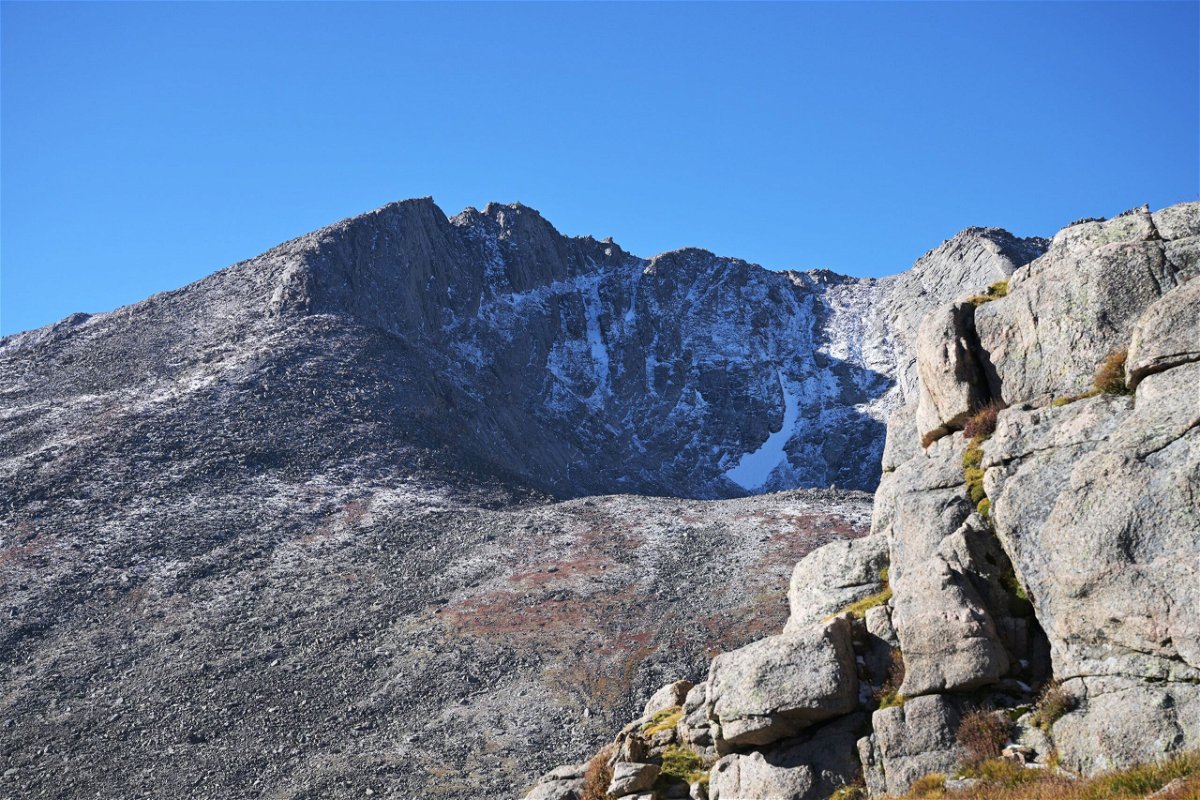Colorado peak named after former governor linked to a massacre of Indigenous people has been renamed Mount Blue Sky

Mount Blue Sky
By Alaa Elassar, CNN
(CNN) — On one cold November morning in 1864, more than 200 Cheyenne and Arapaho tribal members, mostly women and children, were murdered in one of the worst massacres in American history.
For 128 years, the man historians say authorized the massacre had a mountain – which was located on Indigenous territory – named after him.
But not anymore.
Mount Blue Sky, formerly Mount Evans, was renamed in a Friday vote of the US Board of Geographic Names, the US Department of the Interior announced in a news release.
As the 14th highest peak in Colorado, the mountain stands at 14,258 feet along the Arapaho and Roosevelt National Forests and the Pike and San Isabel National Forests.
The new name holds significance because “the Arapaho were known as the Blue Sky people and the Cheyenne have an annual ceremony of renewal of life called Blue Sky,” according to the petition to rename the mountain submitted by the Cheyenne and Arapaho Tribes.
“It is a huge step, not only for the Cheyenne and Arapaho people, but also for the Ute Mountain Ute Tribe, Southern Ute Tribe, Northern Arapaho Tribe, Northern Cheyenne Tribe, and other allies who worked diligently to begin the healing process, bringing honor to a monumental and majestic mountain,” Cheyenne and Arapaho Tribes Governor Reggie Wassana said in a statement.
The board’s Domestic Names Committee voted on the name change after years of consideration “by state, county, local and Tribal governments” and with the support of nearly 75 organizations and hundreds of people, according to the Interior Department.
“Names matter. How we identify our public lands is an important opportunity to be inclusive and welcoming, and to make a lasting impact for future generations,” Michael Brain, Principal Deputy Assistant Secretary of the Interior for Water and Science, said in a statement.
Another chapter in America’s blood stained history
The US National Park Service called the massacre “one of the worst tragedies of the American West.”
Before the massacre, the tribes, who have lived on the Great Plains for generations, were already experiencing the intrusion by American colonists, the park service said. Their western expansion invaded Indigenous land, limiting their hunting grounds and haunting them with the constant threat of violence from the American military.
Indigenous chief Black Kettle of the Cheyenne was committed to his efforts to negotiate peace with then-territorial Governor John Evans and the American Colonist Military, to protect his people, according to the National Park Service. But nothing worked.
The petition to rename the mountain begins with a quote from the 1864 Proclamation by Governor John Evans:
“I, John Evans, governor of Colorado Territory, do issue this my proclamation, authorizing all citizens of Colorado, either individually or in such parties as they may organize, to go in pursuit of all hostile Indians on the plains … to kill and destroy, as enemies of the country, wherever they may be found, all such hostile Indians.”
The Arapaho and Cheyenne tribes – including 750 people, most of whom were women, children and the elderly – followed orders to settle at an encampment by the Big Sandy Creek near Fort Lyon. They were told to wait there, until peace negotiations continued and they would be allowed to go to Fort Lyon for safety and supplies.
But on the morning of November 29, unprovoked, US soldiers opened fire on “innocent and unaware Arapaho and Cheyenne civilians,” and by the end of the massacre, 230 of them were dead.
“During the afternoon and following day, the soldiers wandered over the field committing atrocities on the dead before departing the scene on December 1st,” the park service said.
One soldier, who described the scene in front of Congress, said: “I saw the bodies of those lying there cut all to pieces, worse mutilated than any I ever saw before; the women cut all to pieces…[cut] with knives; scalped; their brains knocked out; children two or three months old; all ages lying there, from sucking infants up to warriors … [mutilated] by the United States troops.”
In 1865, Governor Evans was forced to resign in disgrace, according to the petition. The mountain was named after him In 1895.
The Mestaa’ėhehe Coalition, which united tribal representatives from the Cheyenne and Arapaho and other Indigenous tribes to rename the mountain, said on Facebook “the immense relief of removing a name so associated with the atrocity of the Sand Creek Massacre is felt by many.”
“May this new name be one of honoring the victims and their descendants, healing and moving forward together. And may these sacred homelands once again be a welcome place for all!”
The-CNN-Wire
™ & © 2023 Cable News Network, Inc., a Warner Bros. Discovery Company. All rights reserved.